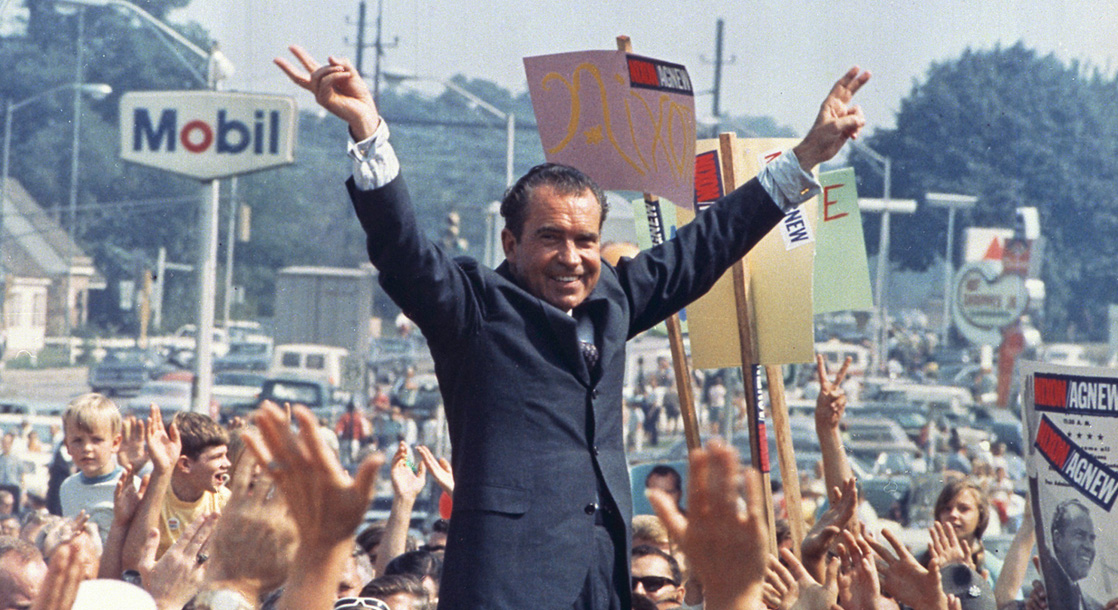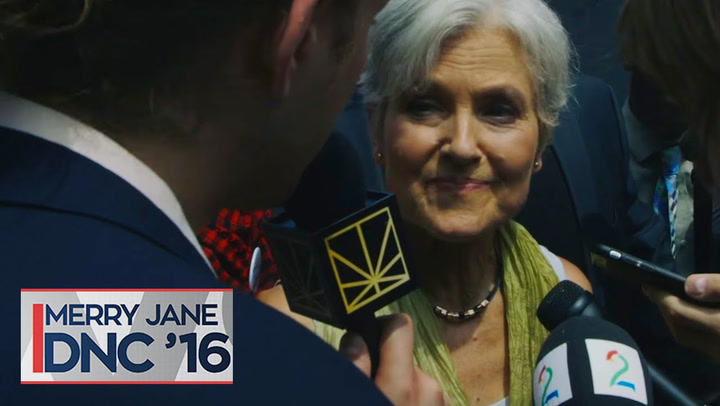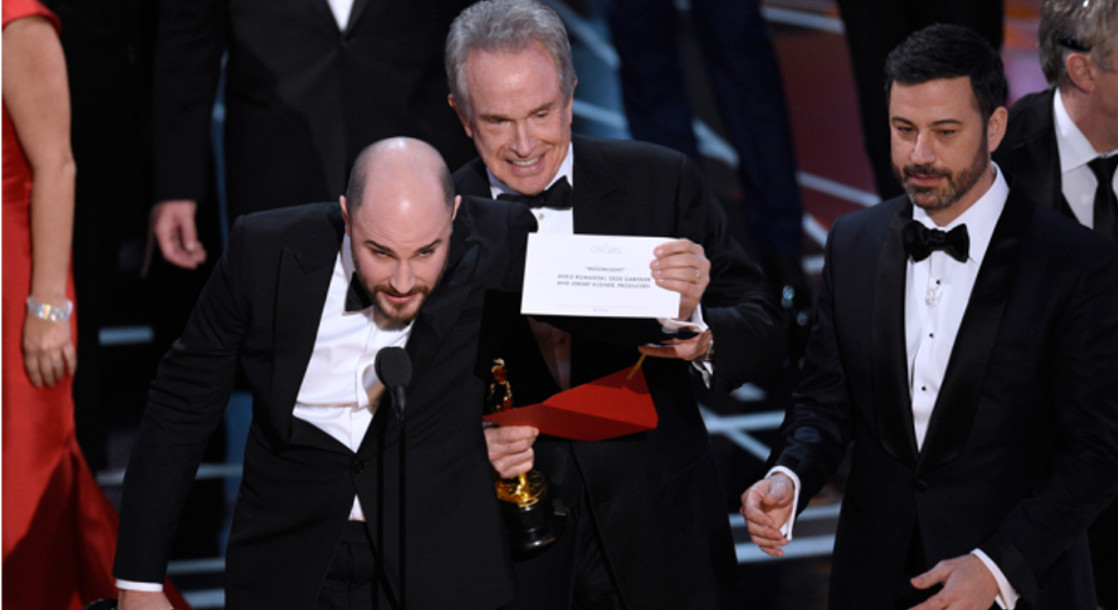The current presidential campaign has been nothing if not entertaining. Both parties’ nominating processes have produced innumerable moments that will live in political lore for years to come.
This year’s nominating conventions are likely to continue in that vein of entertainment. The coronation of Republican nominee, billionaire Donald Trump, is likely to feature a lineup of entertainers and athletes, including pro golfer Natalie Gulbis and UFC president Dana White.
Yet as entertaining as the Republican convention this year is, it will be difficult for it to match the craziness of many of the conventions in years past. What follows are 7 of the craziest and least-predictable conventions in American history:
1860 Republican Convention

With a country on the brink of civil war and the next president likely to face a catastrophic set of circumstances, the selection of the Republican president was of the utmost importance, particularly since the Democratic party was largely in disarray. The early favorite for the nomination was William Seward, a former governor and senator from New York state, with several other candidates seen as strong contenders.
Yet all of the leading Republican candidates were opposed by major factions of the party. Seward led by a wide margin on the first ballot of voting, with Illinois lawyer and former House member Abraham Lincoln a distant second. However, by the third ballot, enough delegates had switched from Seward to Lincoln to ensure that the gangly lawyer would capture the nomination. Lincoln went on to defeat his nemesis, Sen. Stephen Douglas (D), in the general election.
1880 Republican Convention

In 1908, outgoing Pres. Theodore Roosevelt (R) was so popular that he essentially got to choose his own successor. He selected his Secretary of War, William Howard Taft, who went on to win the nomination and the presidency.
Four years later, Taft had largely turned his back on many of the initiatives that Roosevelt had championed as president. As such, Roosevelt sought to oust Taft as the GOP nominee at the party’s convention in Chicago. Taft prevailed in the nominating process, leading Roosevelt to run as an independent under the Progressive Party (nicknamed the “Bull Moose Party”) platform.
Roosevelt’s independent bid was all but a kamikaze mission, as Roosevelt knew he was unlikely to win but was likely to siphon enough votes from Taft to assure a Democratic victory. That turned out to be exactly what happened: New Jersey Gov. Woodrow Wilson (D) wound up winning the general election in a landslide, depriving Taft of a second term.
1912 Republican Convention

In 1908, outgoing Pres. Theodore Roosevelt (R) was so popular that he essentially got to choose his own successor. He selected his Secretary of War, William Howard Taft, who went on to win the nomination and the presidency.
Four years later, Taft had largely turned his back on many of the initiatives that Roosevelt had championed as president. As such, Roosevelt sought to oust Taft as the GOP nominee at the party’s convention in Chicago. Taft prevailed in the nominating process, leading Roosevelt to run as an independent under the Progressive Party (nicknamed the “Bull Moose Party”) platform.
Roosevelt’s independent bid was all but a kamikaze mission, as Roosevelt knew he was unlikely to win but was likely to siphon enough votes from Taft to assure a Democratic victory. That turned out to be exactly what happened: New Jersey Gov. Woodrow Wilson (D) wound up winning the general election in a landslide, depriving Taft of a second term.
1920 Democratic Convention


The end of World War I and the health problems of incumbent President Woodrow Wilson (D) left a leadership vacuum in the Democratic Party. Though the ailing Wilson was in declining health and physically immobile, he nonetheless hoped that the party would look to him to seek a third term; he even blocked the candidacy of one of the party’s strongest candidates — William Gibbs McAdoo, the former Treasury Secretary and Wilson’s own son-in-law — in the hopes that he would ultimately prevail.
With seventeen other candidates vying for the nomination, the convention balloting lasted for a staggering forty-four ballots over the course of 9 days. The party ultimately decided upon Ohio Gov. John M. Cox to be its nominee. Cox would go on to lose the general election to Sen. Warren Harding (R-Ohio).
1968 Democratic Convention
The 1968 Democratic convention in Chicago subsequently became synonymous with violence, unrest, and political malpractice.
In 1968, widespread violence — including the assassinations of Martin Luther King Jr. in April and presidential aspirant and Senator Bobby Kennedy (D-N.Y.) in June — combined with frustrations regarding the ongoing Vietnam War and racial tensions led many to believe the country was coming apart at the seams. Chicago Mayor Richard M. Daley sought to clamp down on any protests that could disrupt the proceedings, leading to many demonstrators — and even reporters — being assaulted by Chicago police and members of the Illinois National Guard.
Ultimately, despite the vast majority of primary voters casting their ballots for anti-war candidates, Vice President Hubert Humphrey was ultimately chosen as the nominee. Humphrey’s nomination — seen among many as the result of backroom dealing — led to the Democratic Party restructuring the ways in which it chose future nominees. Humphrey went on to defeat in November by the GOP nominee, former Vice President Richard Nixon.
1976 Republican Convention
Just several years removed from the aftermath of the Watergate scandal, the Republican Party was in rough shape in 1976. Incumbent President Gerald Ford was also forced to fend off a challenge on his right flank from a resurgent former California Gov. Ronald Reagan, whose brand of far-right conservatism had been building since the failed presidential candidacy of Sen. Barry Goldwater (R-Ariz.) a dozen years earlier. Though Ford ultimately prevailed, he went on to lose the general election to Georgia Gov. Jimmy Carter (D), setting the stage for Reagan’s candidacy 4 years later.
1980 Democratic Convention
With a sluggish economy and the ongoing Iranian hostage crisis dominating headlines, then-incumbent President Jimmy Carter needed a united Democratic party to increase his chances of a November victory. He got just the opposite: Sen. Ted Kennedy (Mass.) — the youngest brother of John and Bobby — challenged Carter in the primaries and almost prevailed at the convention.
Even after his defeat was assured, Kennedy sounded a note of defiance.
“For me, a few hours ago, this campaign came to an end,” Kennedy said in a now-famous speech to the convention. “For all those whose cares have been our concern, the work goes on, the cause endures, the hope still lives, and the dream shall never die.”
A weakened Carter went on to lose the general election to his Republican challenger, Ronald Reagan.











